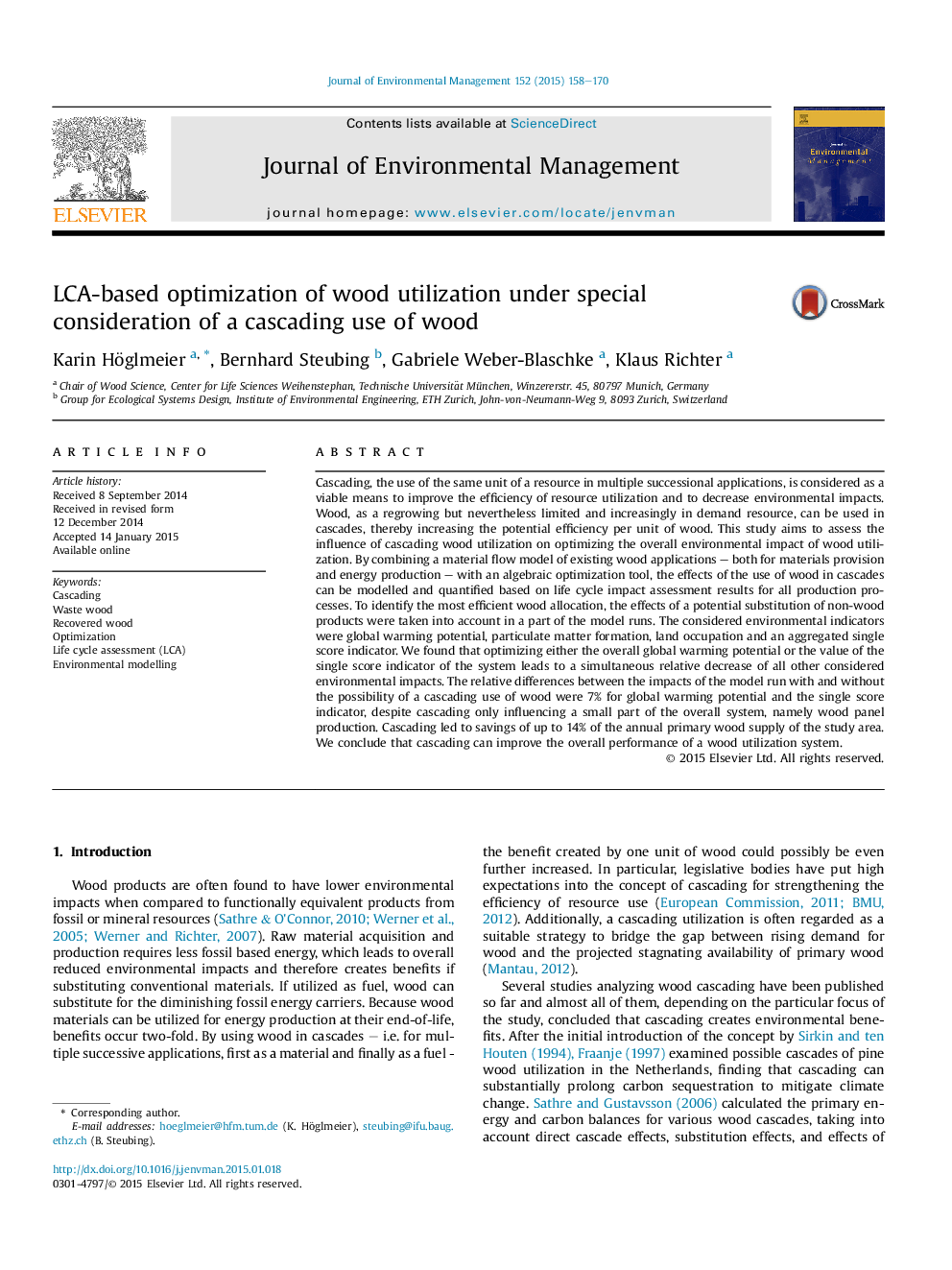| Article ID | Journal | Published Year | Pages | File Type |
|---|---|---|---|---|
| 7482584 | Journal of Environmental Management | 2015 | 13 Pages |
Abstract
Cascading, the use of the same unit of a resource in multiple successional applications, is considered as a viable means to improve the efficiency of resource utilization and to decrease environmental impacts. Wood, as a regrowing but nevertheless limited and increasingly in demand resource, can be used in cascades, thereby increasing the potential efficiency per unit of wood. This study aims to assess the influence of cascading wood utilization on optimizing the overall environmental impact of wood utilization. By combining a material flow model of existing wood applications - both for materials provision and energy production - with an algebraic optimization tool, the effects of the use of wood in cascades can be modelled and quantified based on life cycle impact assessment results for all production processes. To identify the most efficient wood allocation, the effects of a potential substitution of non-wood products were taken into account in a part of the model runs. The considered environmental indicators were global warming potential, particulate matter formation, land occupation and an aggregated single score indicator. We found that optimizing either the overall global warming potential or the value of the single score indicator of the system leads to a simultaneous relative decrease of all other considered environmental impacts. The relative differences between the impacts of the model run with and without the possibility of a cascading use of wood were 7% for global warming potential and the single score indicator, despite cascading only influencing a small part of the overall system, namely wood panel production. Cascading led to savings of up to 14% of the annual primary wood supply of the study area. We conclude that cascading can improve the overall performance of a wood utilization system.
Related Topics
Physical Sciences and Engineering
Energy
Renewable Energy, Sustainability and the Environment
Authors
Karin Höglmeier, Bernhard Steubing, Gabriele Weber-Blaschke, Klaus Richter,
